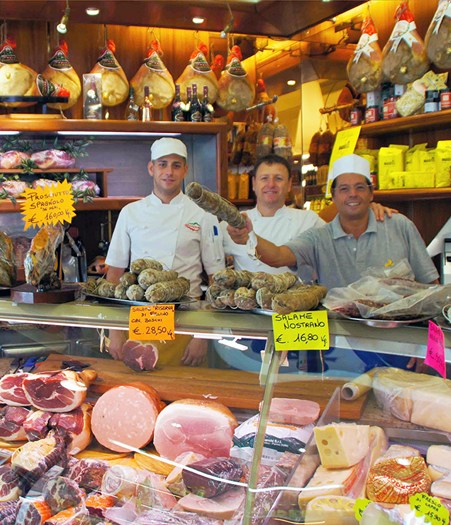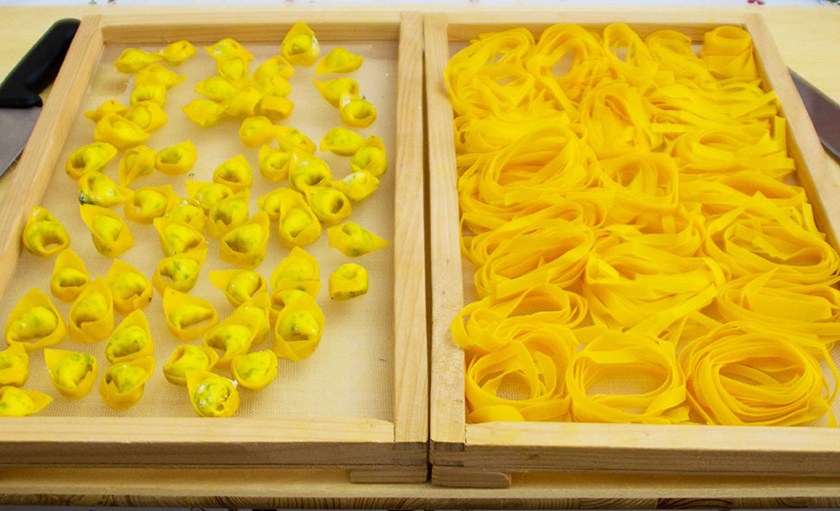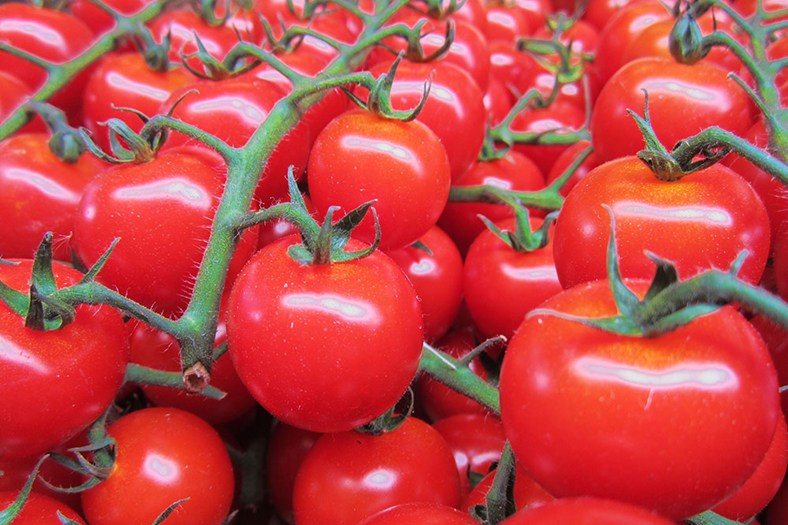MODENA, ITALY - Italo Pedroni pours red wine into my glass and orders me to “Mangia! Mangia! (Eat! Eat!). The patriarch of the Pedroni family has already made many visits to my table with lots of food in his restaurant in this charming northern Italian town.
First, it was tortelloni — a half-dozen little pasta packets stuffed with spinach and ricotta. Then, a bowl of bow-tie pasta, topped with a heaping helping of ragu. I vow I’ll pace myself, but I end up eating it all. Then, an omelette, drizzled with 12-year-old balsamic vinegar. So simple, and so delicious that as I devour it, I promise myself that I’ll have the same dish for breakfast every morning.
When I look up from my plate, Italo is standing there with a platter of meat: braised short ribs, roasted pork loin and guinea fowl, with side dishes of roasted potatoes and bacon.
He smiles at me as he scans the restaurant looking for anyone using a cell phone (Italo has been known to confiscate phones and lock them away until the offenders leave) and then heads back to the kitchen.
I lean back in my chair, sip the last of my wine and wonder if any of the other restaurants I’ll be visiting on this culinary tour of Italy’s renowned Emilia-Romagna region can match Italo’s kitchen.

Above: Shop owners like to ham it up for the tourists.
Trekking through Italy’s famed food region on your stomach requires some finesse. A traveller must be willing to rub shoulders with locals at the dinner table; abandon their carb-phobia; and pack a pair of trustworthy, stretchy pants that go well with an insatiable appetite.
Emilia-Romagna is dubbed the breadbasket of Italy and three of its cities have perfected some of my favourite foods — Modena’s balsamic vinegar is like fine wine; Parma’s ham and cheese, better known as prosciutto and Parmigiano-Reggiano are world-renowned; and Bologna’s ragus, lasagnas, handmade tortellini and tagliatelle send my taste buds into convulsions of ecstasy.
By the time I reach Parma my waistline is stretched but not my budget; dining in family restaurants can save you lots of money, and the food is lovingly prepared by families who proudly display their history and culinary heritage.
The houses on Parma’s main street are painted bright yellows and oranges and, in the summer heat, the ice cream parlours look very inviting. Seeking advice on dining options, some local experts suggest I try the Salumeria Garibaldi.
The storied Salumeria (it’s about 50 years old) is stocked with an assortment of cheese and bread, prosciutto and other hams, wine, balsamic vinegar, olive oil, pastries and cakes, and the deli counter is loaded with pasta, meatballs and other antipasto items.

Above: The fresh homemade past is like nothing you've eaten before.
Customers come in and out of the popular store, picking up fresh produce and prepared goods to take home for dinner, as I check out the menu options and make my selections. Soon, co-owner Vincenzo brings a cutting board carrying delicious prosciutto, parmigiano, fluffy bread and glasses of wine.
Vincenzo and his partner Fabio say their products are all locally sourced. The meats and cheeses are made in traditional style in the region’s mountains, where the air is crisp, the grass is abundant (and chemical-free) and the atmosphere is ideal for curing meats and cheese.
“A local farmer will make a wheel or two of parmigiano a day while a mass producer could make upwards of 60 wheels a day,” says Vincenzo, who challenges me to taste the difference.
Wow, what a difference.
The entire meal, plus a small cake for dessert and a shard of cheese for the road, costs 18 euros (about $30 Cdn), but the experience is priceless.
Then it’s on to Bologna where, after a few days of dining on the city’s famous pastas, I decide to learn how to make them properly and sign up for a course at Big Carlo’s Cooking School.
Our instructor, Luciana, lays out flour, cracked eggs and kneaded dough on a board and shows how they’ve been making tagliatelle here for centuries. It’s a slow, delicate procedure and it produces gorgeous, translucent pasta known as sfoglia.

Above: In Italy, everything tastes better, especially the tomatoes.
Carlo, the gregarious man after whom the school is named, shows me how to make the famous Bolognese sauce that crowns most of the pasta dishes served here. He begins by sautéing minced vegetables, pancetta and ground beef before adding a pinch of salt, red wine and pureed San Marzano tomatoes.
Like an orchestra conductor, Carlo pulls the symphony of flavours together and hums as he stirs the recipe that his nonna (grandmother) taught him in his youth. When finished, there’s no need to taste or tweak — Carlo has made this sauce so many times there’s no chance of error.
He serves the tagliatelle straight out of the pan and onto our plates, generously pouring the ragu over top. Next, he pops open a bottle of red wine and toasts “the great student” — me.
On a quiet Sunday night, with the moon glowing over the patio, Carlo offers his guests some melon slices, parmigiano and mortadella to finish off the meal that I helped prepare.
At the family restaurants of Italy’s Emilia-Romagna region, you really do feel like one of the family.
About the Author
Carmen Chai is an award-winning journalist who's lived and reported from major cities like Vancouver, Toronto, London and Paris. It's safe to say that Carmen has a serious case of wanderlust. She's travelled to more than 25 countries and for a plethora of reasons: hiking along Italy's Amalfi Coast, gorging on street food in Bangkok and getting lost in Istanbul's bustling streets. Along with travel writing, Carmen has reported on crime, federal politics and breaking news for major Canadian publications, including the Toronto Star.